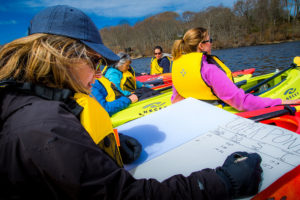Currently, Rhode Island does not perform regular, statewide monitoring of its coastal ponds and embayments. Rhode Island has a Water Monitoring Strategy, issued in 2005, that recommends sampling coastal ponds and embayments on a rotating basis, similar to the program to monitor wadeable rivers and streams. This rotating assessment would complement other core monitoring programs and research efforts by generating water quality data for coastal waters of critical concern, such as Greenwich Bay, which has a history of low dissolved oxygen, and the salt ponds.

A lack of resources has prevented the implementation of a rotating assessment for coastal ponds. The currently operating Narragansett Bay-wide monitoring strategies do not collect data on the conditions in coves and embayments within the bay. The RI Department of Environmental Management’s Shellfish Water Quality Monitoring Program collects bacteriological data throughout coastal waters, including salt ponds, but this program is not designed to collect data on other important water quality parameters, such as dissolved oxygen or nutrients.
Despite the lack of a statewide strategy, data are collected for a number of coastal ponds and embayments through volunteer efforts. For example, the University of Rhode Island Watershed Watch Program (URI WW) lists 77 sites on bays, salt ponds, and harbors among its 2016 sampling locations. The Salt Ponds Coalition, a non-profit organization, conducts monitoring of the salt ponds in concert with URI WW, performs additional analyses, and maintains a database of monitoring results. Various researchers at universities, state and federal agencies, and non-governmental organizations may also contribute data from targeted studies. Data gaps regarding the southwestern coastal ponds are considered a priority due to worsening or vulnerable water quality that will be pitted against the potential for future aquaculture development in that region.
Implemented By
Not implemented due to lack of funding.
